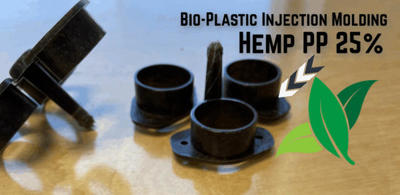In the pursuit of more eco-friendly production methods, bioplastics have emerged as a promising alternative to traditional petroleum-based plastics. Derived from biological sources—such as cornstarch or sugarcane—and often designed for biodegradability, these innovative materials offer an avenue to reduce carbon footprints without sacrificing performance. As companies strive to reduce their carbon footprint and align with consumer demands for sustainability, bioplastics have gained traction in various industries—from packaging and consumer goods to automotive components and electronics housings.
Despite their potential, the transition from traditional plastics to bioplastics requires careful planning. Manufacturers must balance the environmental advantages against factors like cost, production scalability, and consistent material performance.
Understanding Bioplastics
Bioplastics encompass a range of materials made wholly or partially from biological sources—such as cornstarch, sugarcane, or other plant-based derivatives. They can be categorized primarily into:
- Bio-based Plastics: Derived from renewable sources (e.g., polylactic acid/PLA or polyhydroxyalkanoates/PHAs).
- Biodegradable Plastics: Designed to break down more readily under specific conditions, although the exact biodegradation pathways vary by resin.
In sustainable product development, the choice of bioplastic hinges on the application. Each material carries distinct mechanical properties, heat resistance levels, and degradation profiles, which can influence end-product functionality.
Why Choose Bioplastics?
- Lower Carbon Footprint
Bioplastics can significantly cut greenhouse gas emissions when compared to conventional plastics, particularly if they’re sourced from renewable feedstocks and produced using clean energy. - Reduced Dependence on Fossil Fuels
By shifting to agricultural or plant-based inputs, manufacturers can hedge against fluctuating petroleum prices and move closer to a circular economy model. - Expanding Performance Properties
While early bioplastic formulations often had limited mechanical properties, ongoing research has led to improved heat resistance, impact strength, and flexibility—expanding their range of potential applications.
Bioplastic Injection Molding
One of the key manufacturing processes for parts made with bioplastics is injection molding. This process involves heating the bioplastic resin to its melting point and injecting it into a mold cavity to form the desired shape. While the steps resemble those used with standard plastics, there are unique considerations:
- Material Behavior
Bioplastics can have narrower processing windows. For example, some degrade if subjected to high temperatures for too long, making precise temperature control crucial. - Cycle Times
Heat profiles and cooling times may differ from typical petrochemical plastics. Manufacturers often need to fine-tune cycle parameters for consistent part quality. - Equipment Modifications
In some cases, injection molding machines may require specialized screws, barrel configurations, or drying systems to handle the unique flow characteristics of certain bioplastics.
Challenges in Moldmaking for Biodegradable Materials
While bioplastics present exciting opportunities for greener production, they also pose challenges for traditional moldmaking approaches:
- Thermal Sensitivity: Biodegradable resins can degrade if exposed to excessive temperatures or held at elevated temperatures for too long. Moldmakers must design heating and cooling systems that manage precise temperature zones throughout the mold cavity.
- Tool Wear & Maintenance: Some bioplastic formulations can be more abrasive or prone to sticking. Mold surfaces, gating designs, and ejection mechanisms may need special surface treatments or coatings. Others may stick more readily to the mold surface, increasing ejection complexity.
- Flow Characteristics: Variations in melt viscosity require mold flow analyses that differ from standard plastic injection. Moldmakers often consult material suppliers early in the design phase to ensure the mold accommodates these unique flow traits.
By collaborating closely with material scientists, mold designers can engineer tooling that minimizes risks like degradation or warpage, helping manufacturers consistently produce high-quality, biodegradable parts.
Looking Ahead
Successful integration of bioplastics hinges on addressing both technical and economic considerations. Collaboration among product designers, materials scientists, and moldmakers is key to:
- Optimizing Formulations: Continual R&D efforts to improve bioplastic blends for enhanced strength, heat resistance, and processability.
- Refining Equipment: Injection molding machines that are capable of tighter thermal control and specialized screw geometries to handle sensitive biodegradable resins.
- Educating Stakeholders: Training engineers, moldmakers, and production teams on best practices for processing and tooling design.
Over time, as more organizations adopt bioplastics and manufacturers refine these processes, economies of scale may further improve the cost-competitiveness of eco-friendly resins. The continued push for sustainability—both at the consumer and regulatory levels—suggests that bioplastics will remain a growing segment in the broader plastics industry.

